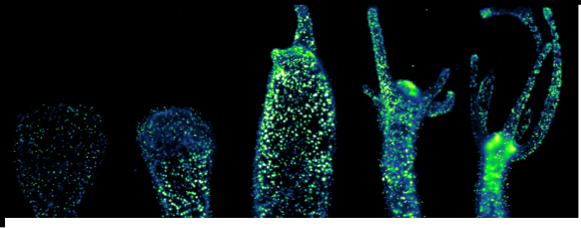NanoBiomolecular Group
Istituto di Scienze Applicate e Sistemi Intelligenti “E.Caianiello”
CONSIGLIO NAZIONALE DELLE RICERCHE






NanoBiomolecular Group
Istituto di Scienze Applicate e Sistemi Intelligenti “E.Caianiello”
CONSIGLIO NAZIONALE DELLE RICERCHE



MAGNETIC AND OPTICAL HYPERTHERMIA
![Hyperthermia is currently exploited as non-invasive approach to integrate conventional therapies, from cancer treatment to wound healing and tissue regeneration. Depending on the thermal shock intensity, cells exposed to high temperatures may activate programmed cell death pathways, undergo immediate necrosis or alternatively, in case of low heat, a mild hyperthermia may enhance wound healing. Heat-emitting nanoparticles that respond to externally applied forces represent fascinating tools for hyperthermia, allowing remote control of heat development, and in turn cell fate and decisions, for instance activating/inactivating specific pathways. In this context, we screened photothermal and magnetothermal properties of gold and magnetic nanoparticles in cell cultures and in vivo models, comparing the cell response to intracellular nano-sized heat sources (nanoheaters) to macroscopic heat sources [1-4]. Following stimulation (alternating magnetic field for Fe3O4 NP and NIR laser for AuNP) the information extracted from Hydra, a model with unparalleled regenerative capacity, melanoma cells and human keratinocytes allow to screen nanoheaters performance inside living tissues (which may profoundly diverge from theoretical models) and suggest diverse biomedical applications ranging from cell ablation to tissue regeneration [5].](hyperthermia_files/shapeimage_1.png)

Magnetic hypertermia
mediated by magnetic materials
All targeted cells will responde upon exposure to an alternating magnetic field (AMF)
Temporal control of heat production
Optical hypertermia
mediated by plasmonic materials
Only irradiated cells will develop heat
Spatio-Temporal control of heat production



Gold nanoprisms for photothermal cell ablation in Hydra
NIR

Go to: NANOMEDICINE
Collaborations
Maria Moros, Instituto de Nanociencia y Materiales de Aragón(INMA), Zaragoza, Spain
Jesus de la Fuente, Instituto de Nanociencia y Materiales de Aragón (INMA), Zaragoza, Spain
Massimo Rippa, Istituto Scienze Applicate e Sistemi Intelligenti, CNR, Pozzuoli